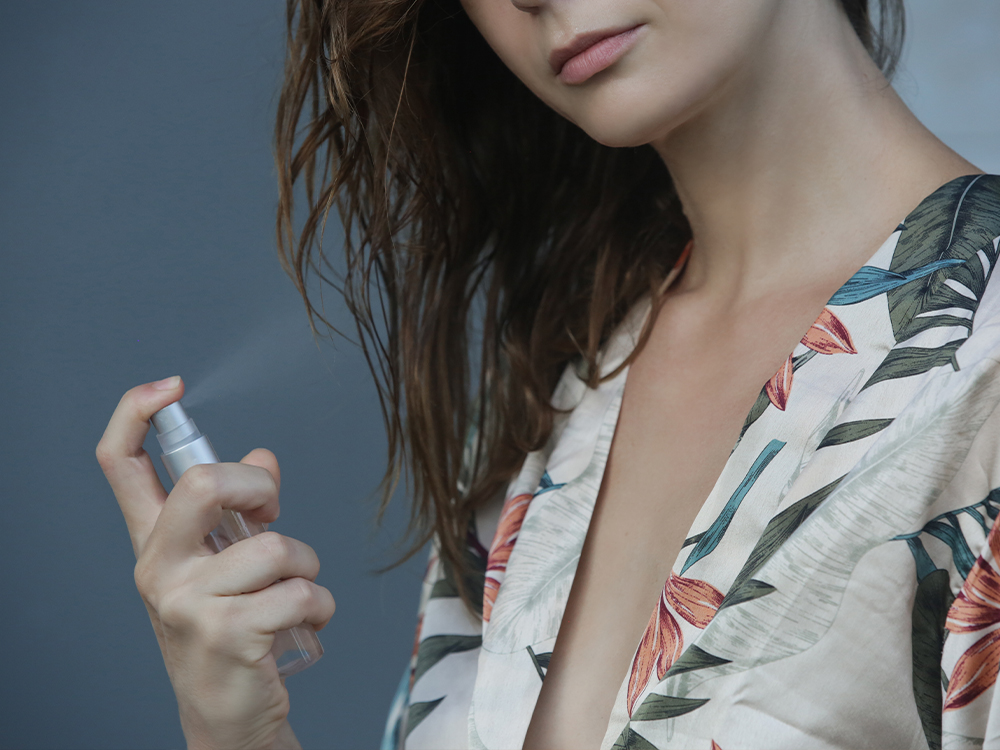Most times, when you flip over a new skin-care product, the instructions will be rather simple across the board: “apply to a clean, dry face”—you know the drill. But with certain ingredients, like hyaluronic acid for instance, there’s been discourse in the skin-care world about why you should opt for damp skin instead. So, when I sat down (or, well, laid down) for a facial with aesthetician and director of education and clinic at renowned acne brand, Face Reality, Stephanie Criscione, last month and she introduced me to the concept of what she calls “hydramaxxing”—dampening the face in between skin-care steps—I was intrigued. Ahead, Criscione talks all things hydramaxxing and why you should consider adding a bit more H2O to your skin-care routine, especially if you’re acne prone.
Why do you recommend dampening the face between skin-care steps?
“Hydration is essential for healthy, radiant skin,” Criscione begins. “Applying products to damp skin helps seal in moisture and improves ingredient absorption. When the skin is hydrated, it tends to be more resilient and less reactive, which is key when using targeted actives like benzoyl peroxide or exfoliating hydroxy acids. For those prone to breakouts, this small tweak— layering supportive products on slightly damp skin—helps minimize irritation and keeps the barrier happy during the acne clearing process.”
New York dermatologist Marisa Garshick agrees that hydrating the face between skin-care steps could be beneficial for maximizing your hydration. “Dampening the face prior to applying moisturizer or a hyaluronic acid serum may be a helpful way to draw more moisture in and boost hydration,” she explains. “Some ways to dampen the skin include using a thermal spring water such as the La Roche-Posay Thermal Spring Water or the Avene Thermal Spring Water ($14).”
What skin-care products and ingredients do you recommend applying to a wet face?
So, what products should you be adding the extra wet step for? “Water-based hydrators and humectant-rich formulas are always going to be your best bet,” Criscione says. “I love using our HydraRemedy Gel Serum ($45) on damp skin. It sinks in beautifully and helps bind water making the skin appear smoother while also increasing its protective abilities. If someone wants to take their hydration to a new level, prepping with a moisturizing toner first can be a game changer. I love using our Moisture Balance Toner ($33) because it acts like an advanced delivery system that helps boost the efficacy of everything layered on top of it.”
Dr. Garshick agrees, adding that “Hydrating toners, serums and moisturizers can be applied to a wet face to enhance absorption and boost overall hydration. Some examples include the Bubble Cosmic Silk Toner ($16), Vichy Mineral 89 Daily Skin Booster ($30) and the CeraVe Moisturizing Lotion ($15).
What products/ingredients should you never apply to wet skin?
As with anything in life, no skin-care advice is completely overarching, and Criscione does clarify that there are some ingredients you should not apply to damp skin. “It’s definitely recommended to avoid applying exfoliating acids, like mandelic, glycolic or salicylic acid, or even benzoyl peroxide to wet skin,” she explains. “Damp skin increases ingredient absorption, which might sound like a good thing, but it can actually lead to over-penetration, irritation or barrier disruption. I always coach my clients to apply those ingredients to fully dry skin, so we stay in control of how their skin tolerates them, especially during the early stages of the acne clearing process.” Criscione also advised me during our facial to avoid putting retinol on wet skin for the same reason.
